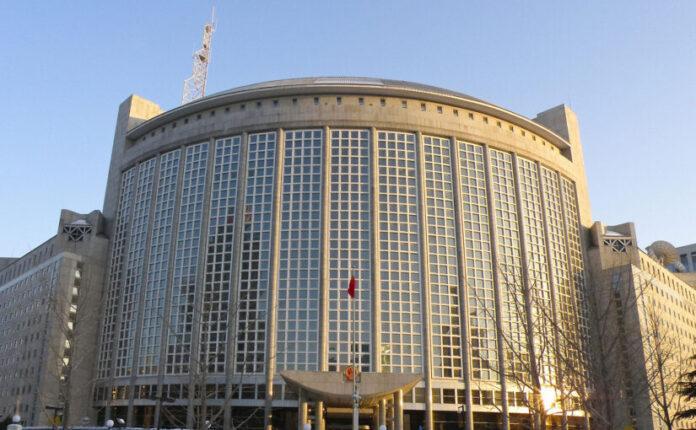Clip source: China’s position on the political settlement of the Ukraine crisis – Friends of Socialist China
On February 23, with the first anniversary of Russia’s launch of its Special Military Operation in Ukraine, China issued a 12-point document, setting out its official position on the conflict.
The 12 points are:
- Respecting the sovereignty of all countries
- Abandoning the Cold War mentality
- Ceasing hostilities
- Resuming peace talks
- Resolving the humanitarian crisis
- Protecting civilians and prisoners of war (POWs)
- Keeping nuclear power plants safe
- Reducing strategic risks
- Facilitating grain exports
- Stopping unilateral sanctions
- Keeping industrial and supply chains stable
- Promoting post-conflict reconstruction
Regarding the first point concerning respect for the sovereignty of all countries, the Chinese Foreign Ministry calls for strict observance of the purposes and principles of the United Nations Charter. It stresses that: “The sovereignty, independence and territorial integrity of all countries must be effectively upheld. All countries, big or small, strong or weak, rich or poor, are equal members of the international community.” Significantly, considering the long and continuing record of the imperialist powers in failing to observe and flagrantly breaching these principles, it adds, in a point that has been expressed in one way or another by numerous countries of the Global South, that: “Equal and uniform application of international law should be promoted, while double standards must be rejected.”
On the need to abandon the Cold War mentality, the document states: “The security of a region should not be achieved by strengthening or expanding military blocs. The legitimate security interests and concerns of all countries must be taken seriously and addressed properly.” This underscores that part of the complex background to the present tragic situation lies in the steady expansion of the aggressive NATO alliance right to the borders of Russia, in breach of repeated promises made to Soviet and Russian leaders at the time of the collapse of the USSR. It also alludes to the proposed accession of hitherto ostensibly neutral Finland and Sweden to NATO. It continues by calling for the forging of a “a balanced, effective and sustainable European security architecture,” and working together for peace and stability on the Eurasian continent. Such proposals, in one form or another, have been advanced over the years by a number of countries, including France and Russia. They are, of course, bitterly opposed by the United States, as the prospect of the countries and peoples of Europe and the wider Eurasian space making their own arrangements and settling their own problems would correspondingly reduce the superpower’s capacity for hegemonic meddling, division and domination.
The document calls for resuming direct dialogue as quickly as possible, noting that dialogue and negotiation are the only viable solution to the crisis. It should be noted here that such negotiations between Russia and Ukraine had resulted in at least the broad outlines of an agreed settlement as far back as last April, but this was scuppered by outside intervention, not least a hurried visit to the Ukrainian capital by then British Prime Minister Boris Johnson. Since then the peace process has been aborted and the conflict has escalated, thanks to massive infusions of western military support, making the proxy nature of the conflict completely transparent.
China reaffirms that it opposes armed attacks against nuclear power plants or other peaceful nuclear facilities. Ukrainian forces have repeatedly shelled the Zaporizhzhia nuclear plant and obstructed international inspectors. It further notes that: “Nuclear weapons must not be used and nuclear wars must not be fought. The threat or use of nuclear weapons should be opposed.” This not only reflects the fact that China is the only one of the five recognized nuclear powers that has consistently and unequivocally stood for a ‘no first use’ policy, but also the fact that the quoted statement embodies an agreed position taken by the United States, Russia, China, Britain and France not long before the outbreak of the war in Ukraine.
The Chinese Foreign Ministry also insists that: “Unilateral sanctions and maximum pressure cannot solve the issue; they only create new problems…Relevant countries should stop abusing unilateral sanctions and ‘long-arm jurisdiction’ against other countries.” Unilateral sanctions are a kind of ‘smokeless warfare’ deployed by the United States against any country that displeases it or fails to dance to its tune. In a clearly well-prepared operation, they have been deployed against Russia, to a maximum and still escalating extent, since the start of the special military operation. Equally, the US uses ‘long-arm jurisdiction’ on an industrial scale, against adversaries and allies alike, as this recent detailed presentation published by the Xinhua News Agency makes clear.
Below is the full text of the Chinese Foreign Ministry statement. It originally appeared on the ministry’s website.
Summary
China will stay firm on the side of peace, dialogue and the right side of history. We will stay committed to promoting peace talks, and work with the rest of the international community to play a constructive role in and make our own contribution to the political settlement of the Ukraine crisis.
❖






